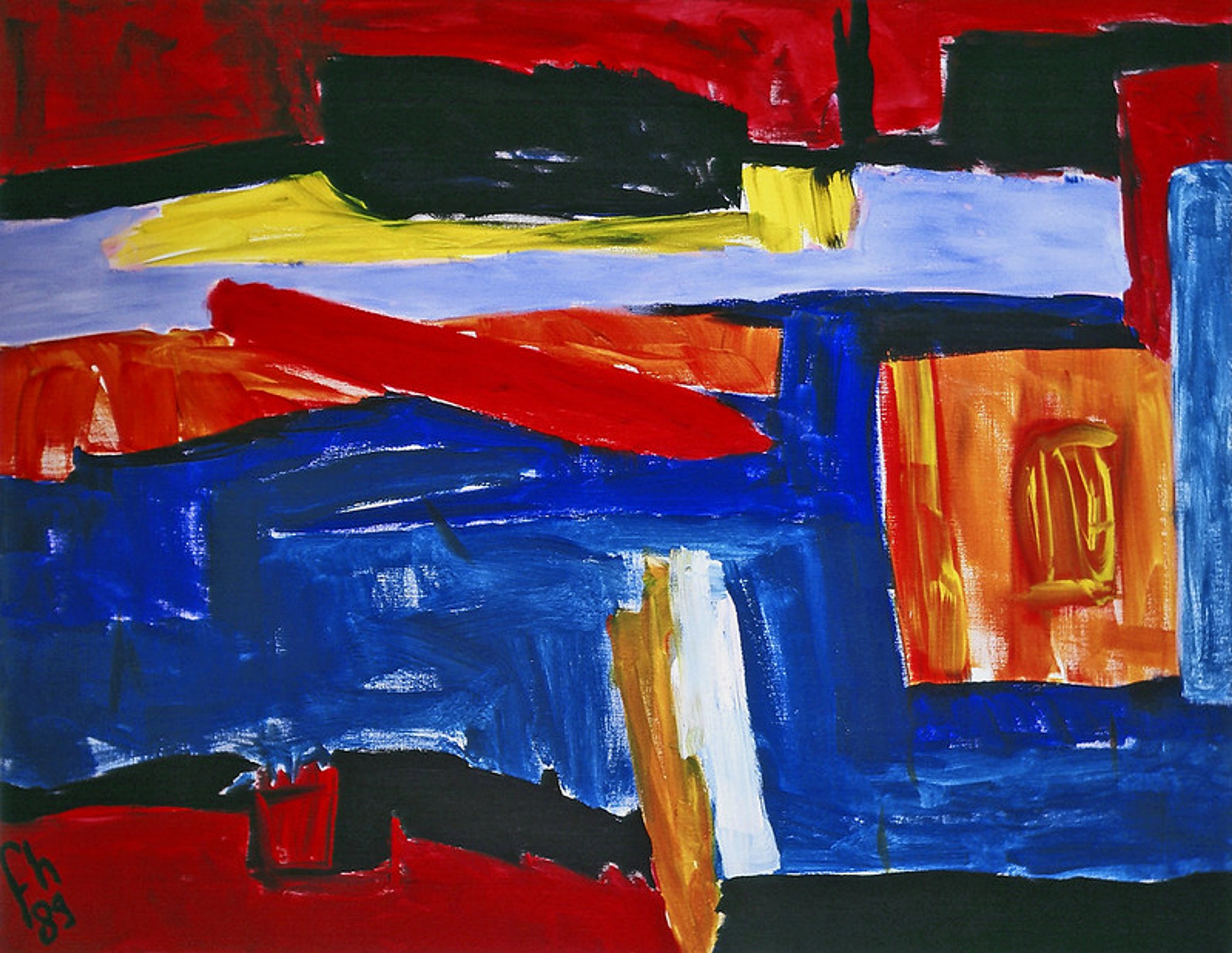
Abstract Art Resonance: A Collector's Personal Guide to Deep Meaning & Self-Discovery
Unlock abstract art's profound personal resonance. An artist's guide to connecting deeply with non-representational art, sharing practical steps, introspective insights, and modern relevance for self-discovery and a meaningful collection.
Finding Your Soulmate in Art: A Collector's Guide to Abstract Resonance and Personal Meaning
Sometimes, I stand in front of a canvas – even one of my own – and it feels like a secret club I'm not entirely privy to. Maybe you’ve felt that too, especially with abstract art. The common narrative goes, "I just don't get it." And trust me, for years, I was right there with you, thinking understanding art required some secret decoder ring I hadn't found in a cereal box. It was a frustrating, almost alienating feeling, a barrier between me and a whole world of expression. But then I realized something fundamental.
Here's the thing: abstract art isn't always about "getting" it in a logical, step-by-step way. It's about feeling it. It's about allowing a piece to resonate with something deep inside you. It’s a conversation, not a lecture; it invites your participation, your unique interpretation, rather than simply presenting a fixed message. And as an artist who creates abstract work, my greatest joy comes not from explaining every brushstroke, but from witnessing someone connect with a piece on their own terms. This guide isn't just about appreciation; it's about empowering you, the collector, to forge a deep, personal connection with non-representational art, moving beyond mere liking to profound feeling and self-discovery.
My Journey to Understanding (and Loving) the Abstract
My path to abstract art wasn't a straight line. For a long time, I appreciated technical skill in representational art – the perfect landscape, the striking portrait. Abstract seemed... chaotic, indulgent even. It took time, a lot of staring, and a fair bit of internal wrestling – that struggle between my logical mind demanding a clear narrative and my heart simply wanting to feel. I remember an early exhibition, standing before a large, vibrant canvas, all swirling lines and explosive color. My mind raced, trying to find a hidden figure, a landscape, anything recognizable. I walked away frustrated, dismissing it as 'just paint.'
Years later, a quiet afternoon in a small gallery, I found myself captivated by a Rothko, those vast, luminous fields of color. Initially, I felt utterly… nothing. Or rather, a vague sense of 'is that it?' But then, I spent another five minutes. Then ten. And in that quiet observation, a flicker. It was a distinct tightening in my chest, a sense of profound longing mixed with an unexpected calm, like remembering a dream you didn't know you'd had. A memory of a sunset over the Dutch polders, the light bleeding into the horizon, the profound stillness, the way the colors dissolved into each other like a dream. It wasn't what Rothko painted, but it was what the painting unlocked in me – a powerful, almost spiritual connection to a personal memory, a profound sense of peace. That was my turning point, a powerful moment when art became a mirror, not a puzzle. It showed me that meaning wasn't always explicit; sometimes, it was an echo within my own soul.
It’s a bit like listening to instrumental music. You don't try to decipher lyrics or a concrete story; you let the melodies and rhythms wash over you, evoking moods and memories. Over time, you build a connection, understanding its nuances. Abstract art is similar. You don’t need to know the artist’s intent immediately. You start with your gut reaction, and then you dig deeper, if you choose, letting the experience unfold like a slow, resonant melody.
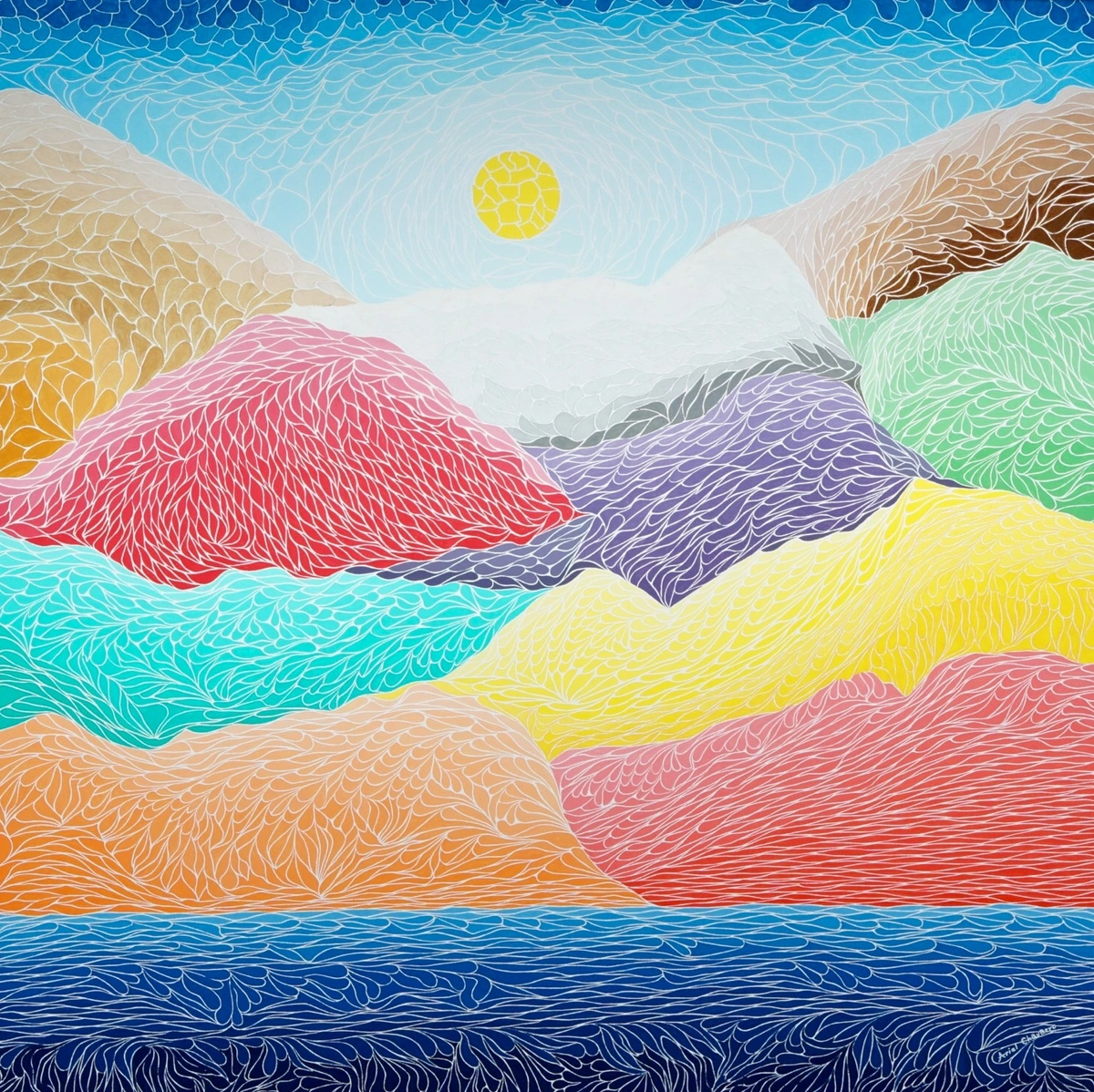
What is "Personal Resonance" Anyway?
"Personal resonance" is that gut feeling, that emotional ping, that subtle pull you feel towards a non-representational artwork. It’s not about finding a hidden object or deciphering a secret code. It’s about a deeply subjective and evolving connection, a dance between the artwork and your inner world. It's about:
- Emotional Connection: Does it conjure a specific mood? Perhaps the quiet joy of a childhood summer afternoon, the restless energy of a city at night, or the profound calm of a winter morning? This evoked feeling is unique to you, shaped by your life, your culture, your memories, and your current state.
- Memory & Experience: Does it subtly remind you of a place, a feeling, a moment in your life, even if vaguely? Perhaps the deep blues echo a vast ocean, or the jagged lines recall the struggle of a mountain climb or a particularly challenging period in your life.
- Sensory Reaction: Do the colors vibrate like a hummingbird's wings? Do the textures feel soft and inviting, or rough and challenging? Does it evoke a sound, a scent, or even a taste in your imagination? It's that synesthetic whisper that makes a piece feel alive.
- Intellectual Curiosity & Catalyst for Introspection: Does it make you ponder, question, or simply feel fascinated by its composition or technique? Beyond just reflecting your existing thoughts, does it prompt new ideas, provoke fresh perspectives, or unlock a different way of seeing your own experiences? Does it feel like a puzzle that keeps your mind gently spinning, constantly revealing new layers?
- The Sublime & Infinite: Does it evoke a sense of awe, vastness, or an encounter with something beyond immediate comprehension, hinting at the limitless aspects of existence or the universe? This profound sense of scale and mystery is often a hallmark of truly resonant abstract work.
For more on this, my guide on decoding abstract art: finding meaning offers deeper insights.
It's unique to you. What resonates with me might leave you cold, and vice-versa. And that's perfectly okay. It’s a beautiful, constantly shifting dance between the artwork and your internal landscape, revealing new facets with each interaction.
Practical Steps to Forge a Connection
So, how do you actually do this? It’s less about a rigid checklist and more about cultivating an open, curious mindset. But here are a few things I’ve found helpful, both as a creator and a lifelong observer:
1. Ditch the Expectation to "Understand"
This is perhaps the biggest hurdle. We're conditioned to look for narratives, for recognizable forms, for a logical beginning and end. With abstract art, try to shed that. Don't ask "What is it?" Instead, ask "How does it make me feel?" or "What does it remind me of, if anything?" It’s an invitation to let go of cognitive control and simply be present with the visual experience.
2. Embrace the Visceral First
Before you intellectualize, let your eyes wander. What's the first thing that grabs you? The color? The texture? The overall energy? Is it aggressive, calming, chaotic, serene?
Notice the rhythm of the lines, the interplay of light and shadow, the sheer presence of the colors, or even just the quiet hum it creates in the space. Don't censor your initial reaction, just feel it. Let it hit you like a wave, before your mind tries to impose order on it. This raw, immediate sensation is the starting point of resonance.
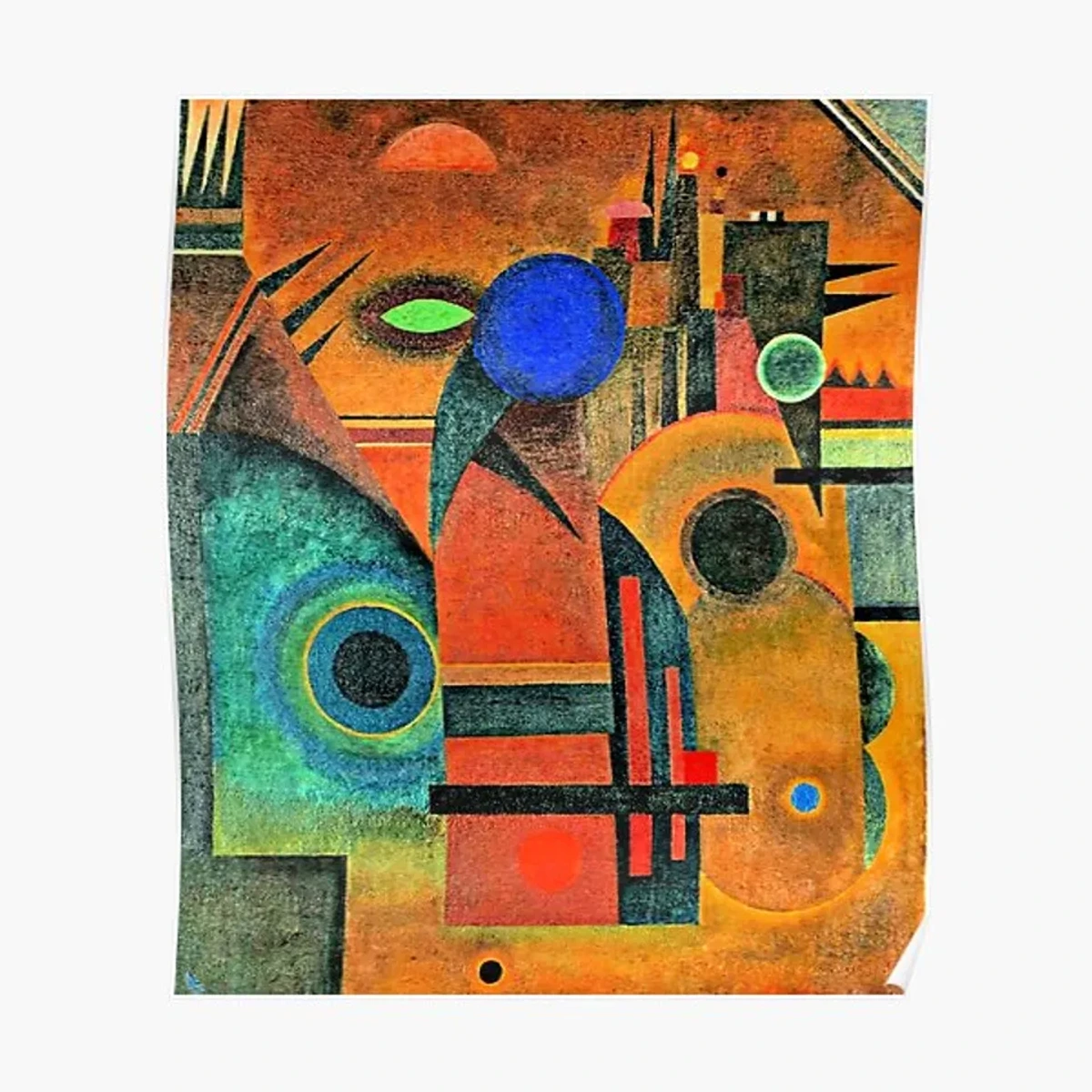
3. Consider the Elements – Your Personal Language
Even without a subject, abstract art speaks through its fundamental art elements:
- Color: Does a particular hue speak to you? Red, for instance, can scream anger, ignite passion, or vibrate with raw energy like a crimson fire. Blue might wrap you in calm, echo a profound sadness, or open up vast, endless oceanic skies. What personal stories do you paint with these hues? Discover more about how artists use color in their work.
- Shape & Form: Are the lines sharp and angular, or soft and flowing? Do the shapes feel heavy or light, balanced or dynamically off-kilter? Consider how these forms create a sense of movement or stillness, perhaps mirroring the ebb and flow of life itself.
- Texture: Is it thick and impasto, almost inviting you to touch, or smooth and glassy, reflecting light like a still pond? How does this texture contribute to the overall feeling – perhaps a rough, built-up surface speaks of struggle, while a delicate layering suggests introspection? (You can explore more on my approach to adding depth if you’re curious).
- Composition: How do all these elements fit together? Is there a sense of movement, tension, or harmony? What story does their arrangement tell, without a single literal image? Does it feel like a visual symphony, carefully orchestrated, or a wild, spontaneous dance, reflecting the beautiful chaos of existence? Remember to also observe the negative space – the areas around and between the main forms. How does its shape, size, and relationship to the positive forms influence the overall balance, tension, or sense of openness in the piece?
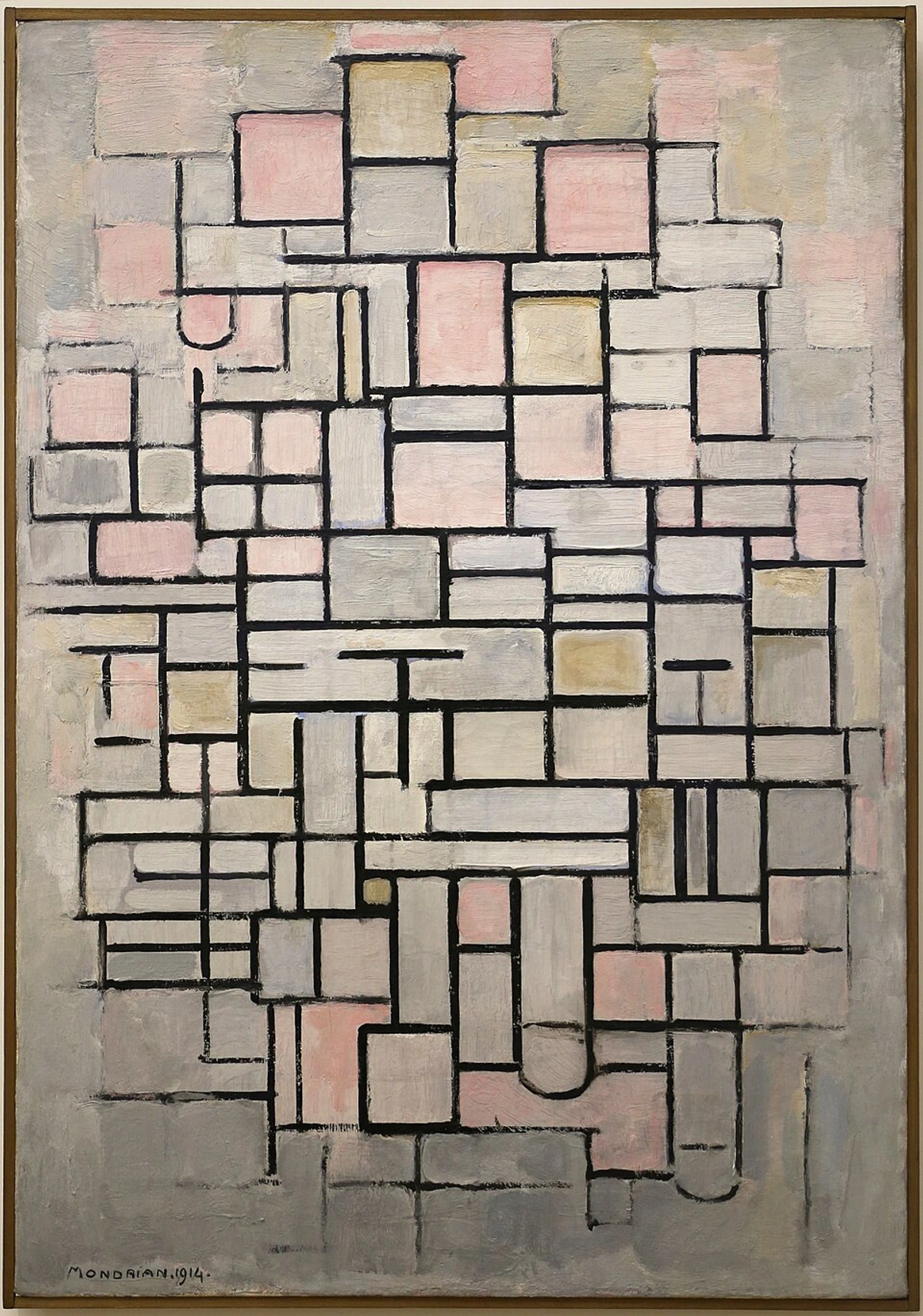
4. Spend Time with It (Even a Little)
Just like that new person in your life, you don't form a deep connection in five seconds. Visit a gallery, or if you're starting an art collection, take a piece home and live with it for a bit. The beauty of abstract art is that its meaning can unfold over time, revealing new facets with each viewing, each change of light, each shift in your mood. Beyond just looking, consider active engagement: try sketching the lines and shapes, writing down the feelings it evokes, or even discussing it with a friend. Sometimes simply changing its position in a room can reveal entirely new dialogues. My own journey of a painting to your wall is a testament to this unfolding process.
5. Research the Artist (If You Want To)
While not essential for personal resonance, knowing a bit about the artist's philosophy or process can sometimes deepen your appreciation. Why do they paint abstract? What inspires their intuitive approach? Sometimes, knowing a snippet of their story, like what drives me to paint abstract, can provide an extra layer of connection. For example, understanding how an artist uses their work as a form of emotional catharsis can help you connect with the raw feelings expressed, finding your own catharsis in the process.
It also helps to briefly consider the broader historical context of abstract art. Knowing about movements like Abstract Expressionism (think Pollock's energetic drips), Minimalism (like the precise forms of Agnes Martin or Donald Judd), Color Field painting (Rothko's luminous fields), Suprematism (Malevich's geometric purity), or Cubism's early abstraction (Picasso, Braque) can provide a framework. These movements, while diverse, all challenged conventional notions of art, pushing boundaries and inviting new forms of engagement. Understanding their origins can enrich your appreciation for the why behind the abstraction, even if your connection remains deeply personal. I once bought a small, energetic abstract, convinced I understood the artist’s fiery intent. Only later, after reading about their quiet, meditative process, did I realize I’d projected my own energy. It was a humble reminder that the journey of understanding is ongoing.

The Healing Whisper: Why Abstract Art Matters Today
In our hyper-literal, digitally saturated world, abstract art offers a profound antidote. We are constantly bombarded with explicit images, clear narratives, and information that demands immediate interpretation. Abstract art, by contrast, invites us to pause, to breathe, and to simply be. It provides a space for quiet contemplation, a visual meditation that allows our minds to wander, to make personal associations without the pressure of a fixed meaning. This unique freedom makes it an invaluable tool for mindfulness, reducing mental clutter, and fostering a deeper connection to our inner selves. It's a reminder that not everything needs to be explained or categorized to be deeply meaningful.
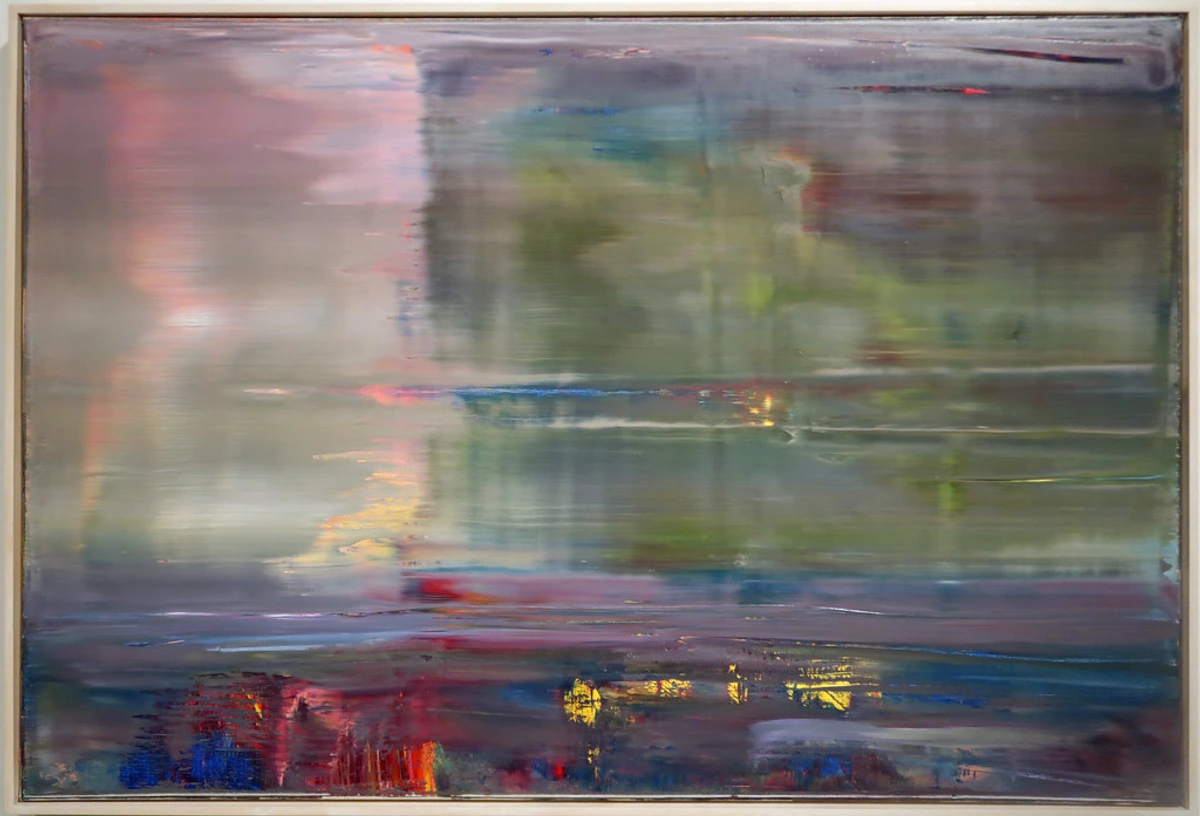
Beyond the Canvas: Common Misconceptions About Abstract Art
Before we dive into living with your chosen piece, let's briefly tackle some of those lingering questions or assumptions you (or others!) might have. It's easy to dismiss abstract art, but often, these dismissals stem from a misunderstanding of its true nature and the profound skill involved.

"It's just random squiggles!"
Ah, the classic. While some abstract art might appear spontaneous, very little of it is truly random. Even the most energetic action paintings are often the result of immense control, a deep understanding of composition, and years of practice. There's a deliberate, intuitive process at play, where every mark, every color choice, contributes to an overall feeling or visual harmony. It's a calculated dance between freedom and form, informed by a lifetime of artistic exploration.
"My kid could do that."
Perhaps the most frustrating misconception for abstract artists. While a child might produce a colorful, spontaneous drawing, they typically lack the foundational understanding of art elements, the deliberate intention, the sophisticated color theory, and the years of technical mastery that underpin a professional abstract work. It's the difference between babbling playfully and delivering a complex, improvised jazz solo. Both involve spontaneity, but only one is built on a lifetime of disciplined practice and deep knowledge.
"But what does it mean?"
This isn't really a misconception, but rather a misplaced expectation. Abstract art isn't usually meant to convey a universal, singular 'meaning' that the artist encoded and you must now decipher. Its power lies in its openness. It acts as a Rorschach test for your soul, inviting your experiences, your memories, your emotions to inform the experience. The meaning isn't in the painting; it's the dialogue that happens between the painting and you. It means whatever it resonates with in you.
Living with Abstract Art: A Daily Dialogue and Collecting as Self-Discovery
Once you find a piece that resonates, bringing it into your home isn't just about decorating (though it certainly helps create a vibe – especially in small spaces!). It’s about inviting a constant dialogue, a quiet companion to your daily life. I once created a series of works inspired by the Dutch light, full of muted blues and greys, with sudden bursts of ochre. It wasn't meant to be a landscape, but a client told me it reminded them intensely of their childhood home in Zeeland, the coastal light. That connection, entirely unintended by me, was the artwork truly living and breathing in their space, resonating with their history. That’s the magic. I often talk about meditating with an abstract painting, and it’s a profound experience. The piece shifts with the light, with your mood, with the time of day. It becomes a mirror, reflecting different aspects of your internal world back to you, a constant invitation for introspection.
Consider the art of display and curating a gallery wall to enhance this dialogue. A calming piece for a bedroom might feature soft, flowing lines and cool hues, inviting tranquility. An energetic, bold abstract could be the perfect conversation starter in a living room, stimulating thought and passion. And don't forget the framing – a simple float frame can make a canvas 'pop' and define its presence, while a more ornate frame can add an unexpected layer of historical dialogue. This is also where collecting abstract art becomes a journey of self-discovery. Each piece you choose, because it resonates personally, adds a layer to the story of who you are, what you value, and how your inner world evolves. Your collection isn't just objects; it's a curated reflection of your soul. What hidden conversations is your chosen piece waiting to have with you, and what new aspect of yourself will your next acquisition reveal?
Speaking of acquisitions, I recently sold a piece that had hung in my studio for months, a swirling vortex of deep blues and vibrant yellows. I initially created it during a period of intense creative flux, seeing it as a representation of controlled chaos. The client, however, saw a storm at sea, a reflection of their own struggles with a tumultuous life event, but ultimately, a sense of emerging calm. Witnessing that transference, that deeply personal interpretation, was a potent reminder of the artwork's capacity to transcend my initial intent and become something entirely new and vital for someone else. It really does become a living part of your home.
Frequently Asked Questions About Connecting with Abstract Art
Question | My Humble Artist's Take |
|---|---|
| Do I need an art history degree to appreciate it? | Absolutely not! Your personal, gut reaction is far more valuable and authentic than any academic interpretation. Trust yourself – your feelings are valid. |
| What if I still don't "get" it? | That's perfectly okay! Not every piece will speak to everyone, and that's the beauty of subjective experience. It's like music – you don't have to love every song to appreciate the genre. Keep looking; your piece is out there, waiting for you. |
| Is abstract art truly "skillful"? | Oh, the old chestnut! It's easy to assume a lack of skill when you don't see a clear subject. But professional abstract art often demands profound understanding of art elements – color theory, composition, texture, light – and an immense amount of intuitive control. While, yes, there's a spectrum of artistic ability in any genre, the works that truly resonate are crafted with years of practice, deep intention, and a sophisticated visual vocabulary. It's just a different kind of skill, focused on expression and evocation over exact representation. |
| Should I buy art just because it matches my sofa? | While aesthetics play a role (we all want our spaces to look good!), try to find a piece that also resonates emotionally and intellectually. Your sofa might change, but your connection to a piece can last a lifetime. If you are looking to buy art, make sure it is for you, not just your furniture. |
| Can abstract art have a "wrong" interpretation? | From my perspective, no. If a piece makes you feel something specific, or reminds you of something, that's your unique, valid experience. Art is a deeply personal journey, and there are no wrong answers in your internal dialogue with a piece. |
| What about the artist's original intent? Does it matter? | The artist's intent is a wonderful starting point for understanding the work's historical context or their personal philosophy, but it's not the final word on its meaning. Once a piece leaves the studio, it takes on a life of its own, inviting the viewer's unique perspective. Your connection to the piece is just as valid and valuable as my initial vision. |
| Where can I see more abstract art in person? | Besides local galleries, consider visiting museums. If you're ever near 's-Hertogenbosch, Netherlands, you could always pop into my museum here for a glimpse of where some of these ideas come to life, and perhaps even experience how my personal philosophy translates onto the canvas firsthand, offering a unique perspective on abstract art's creative process! |
The Unfolding Story
Finding personal resonance in abstract art is less about a grand revelation and more about a slow, gentle unfolding. It’s about trusting your instincts, being open to feeling, and allowing the artwork to become a mirror for your own internal world. It's a deeply rewarding journey, one that makes your art collection not just a display of beautiful objects, but a vibrant, ever-evolving reflection of your own unique story, a testament to your personal growth and evolving perceptions. And when you're ready to acquire art, remember that the most meaningful pieces are those that speak directly to your soul, becoming cherished companions on your journey. Whether through an artist's website, a local gallery, or an art fair, seeking out art that genuinely moves you, perhaps even checking for its provenance or a certificate of authenticity, ensures you bring home a piece that will continue its dialogue with you for years to come.
So go forth, explore, and let the abstract whisper its secrets to you. Be patient, be open, and allow yourself the freedom to simply feel. And maybe, just maybe, one of my creations will find its way to become a part of your unfolding story. You can always check out some of my art for sale if you're curious, or learn more about my timeline as an artist. And if you’re ever in 's-Hertogenbosch, do drop by – I’d love to share more insights in person.




